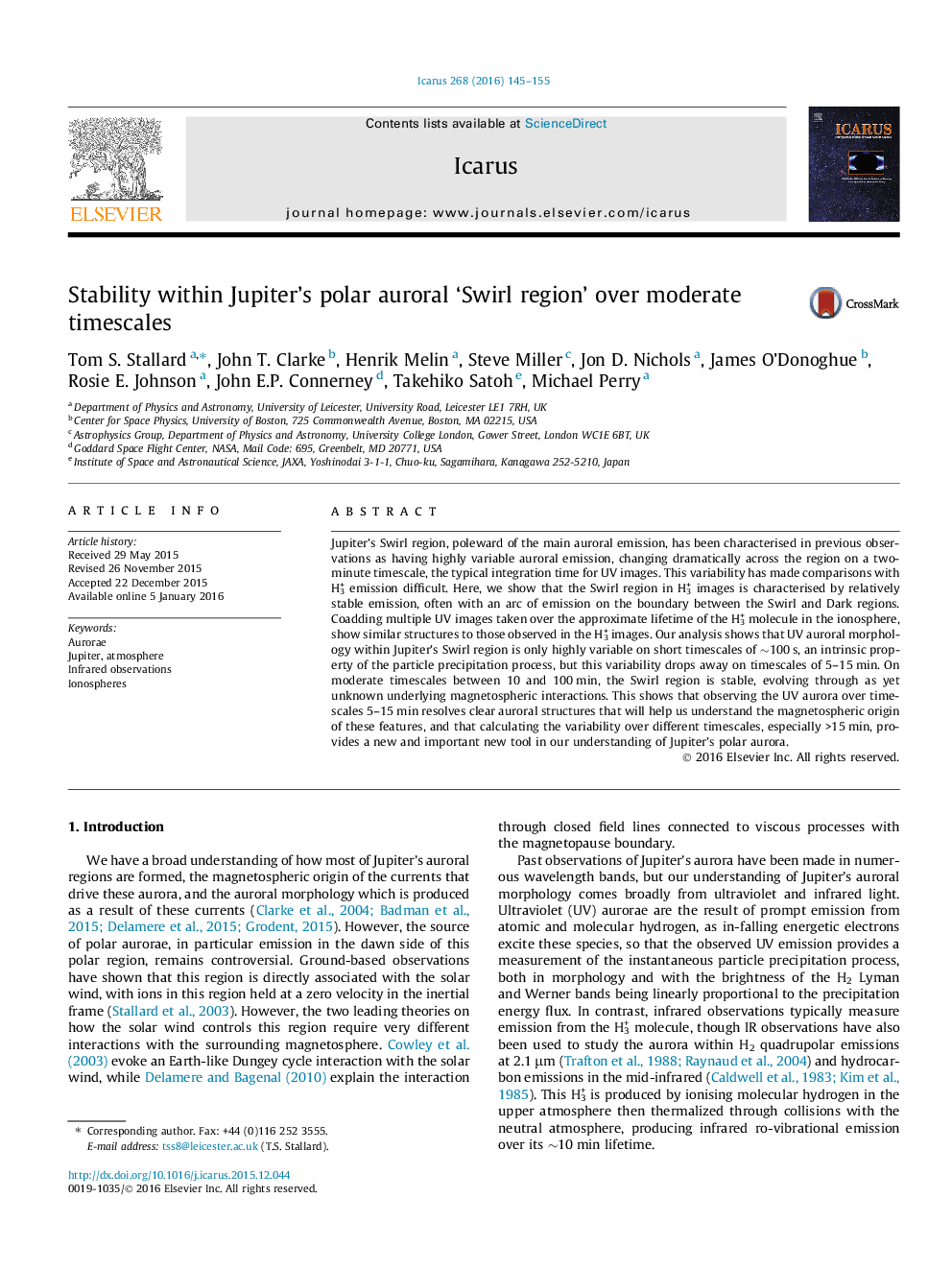| Article ID | Journal | Published Year | Pages | File Type |
|---|---|---|---|---|
| 8135584 | Icarus | 2016 | 11 Pages |
Abstract
Jupiter's Swirl region, poleward of the main auroral emission, has been characterised in previous observations as having highly variable auroral emission, changing dramatically across the region on a two-minute timescale, the typical integration time for UV images. This variability has made comparisons with H3+ emission difficult. Here, we show that the Swirl region in H3+ images is characterised by relatively stable emission, often with an arc of emission on the boundary between the Swirl and Dark regions. Coadding multiple UV images taken over the approximate lifetime of the H3+ molecule in the ionosphere, show similar structures to those observed in the H3+ images. Our analysis shows that UV auroral morphology within Jupiter's Swirl region is only highly variable on short timescales of â¼100Â s, an intrinsic property of the particle precipitation process, but this variability drops away on timescales of 5-15Â min. On moderate timescales between 10 and 100Â min, the Swirl region is stable, evolving through as yet unknown underlying magnetospheric interactions. This shows that observing the UV aurora over timescales 5-15Â min resolves clear auroral structures that will help us understand the magnetospheric origin of these features, and that calculating the variability over different timescales, especially >15Â min, provides a new and important new tool in our understanding of Jupiter's polar aurora.
Related Topics
Physical Sciences and Engineering
Earth and Planetary Sciences
Space and Planetary Science
Authors
Tom S. Stallard, John T. Clarke, Henrik Melin, Steve Miller, Jon D. Nichols, James O'Donoghue, Rosie E. Johnson, John E.P. Connerney, Takehiko Satoh, Michael Perry,
